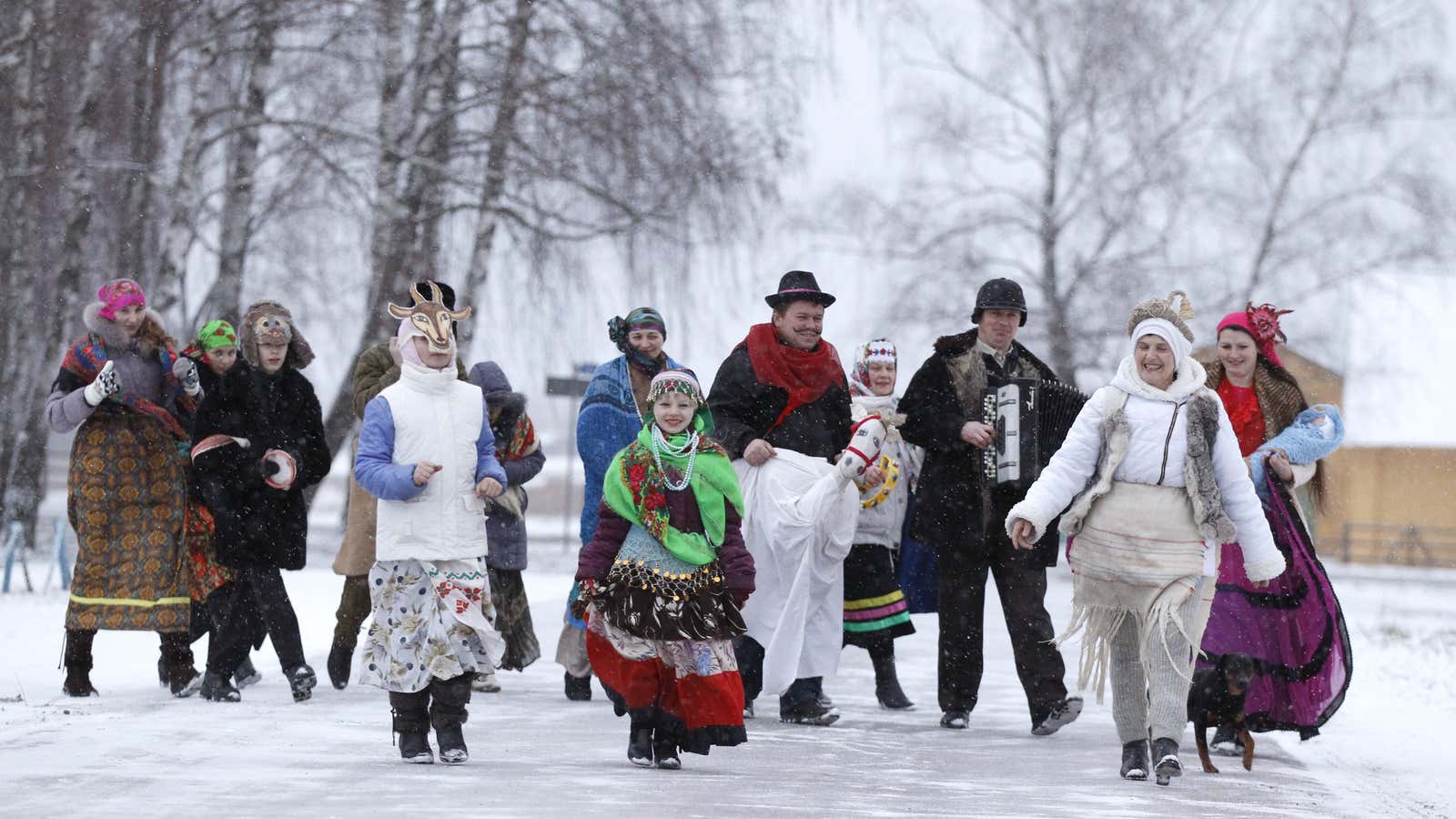I remember walking into my in-laws’ house for my first English Christmas. A fire was blazing inside the 800-year-old farmhouse nestled in the countryside, dinner was cooking, and teeny-tiny glasses of wine were on the table. A giant Christmas tree stood in the vaulted-ceiling granary, next to the hundred-year-old rocking horse and not far from a grand piano. We ate and sang, walked, sat by the fire. There was something about this richness of tradition that I cherished immediately and longed to pass on to my not-yet-existent kids.
The good news is that you don’t need centuries of history to create a rich tradition. Jenny Rosenstrach, author of How to Celebrate Everything, has some ideas on how to do it. Her latest book‚ a cookbook, is an homage to rituals, and they power they have to create memories that matter.
The book is sentimental, witty and filled with recipes to inspire family meals and traditions. Perhaps more importantly, it delivers permission to make a really big deal out of anything—birthdays, a trip to the farmer’s market, Pop Tarts on family vacations, a good Manhattan. And holidays, Rosenstrach argues, are a slam-dunk. “You get extra bang for your memory-making buck,” she says.
Among her traditions: For 15 years, her now-teen daughters have baked the same exact sugar cookies with their grandmother. “I remember when they had to stand on stools; now they are taller than their grandmother,” she said. Every year, they go skating at a rink near her in-laws, and get hot chocolate after. Skating isn’t such a big deal when they do it in New York, where they live. “But there’s something in the air, and the fact that we do it every year and get hot chocolate,” she said. “It brings them comfort.”
And for 20 years, she and her husband’s family have recreated the same exact meal for Christmas Eve and Christmas Day. (When she was testing the recipe for the book, she had to make the beef in July: “It felt so wrong.”) It includes cranberry-marinated beef tenderloin, curried carrots with pecans, and Sybil’s Salad, a creative take on a Waldorf salad. “I like that there are recipes that conjure up a feeling of warmth and family and Christmasness.”
Who cares about roast beast?
Traditions are a big deal to Rosenstrach. She famously charted every meal she had cooked for more than 14 years, which became the fodder for her blog, Dinner: A Love Story, which became her first cookbook.
As her kids have gotten older, the pace of life has picked up, and the siren song of celebrations has only grown louder. “I don’t want to just race to the finish line every day,” she told me recently. In the book, she writes: “On a daily basis rituals help me answer the questions that are central to my life as a parent: How do we help our children recognize things that matter?”
Like most of us, she aspires not to over-schedule everyone, and to maintain balance. Like most of us, she sometimes fails. Rituals are her antidote. “I craved moments and meaning in our days where we could shine a spotlight on the moment and appreciate it, being together, and how lucky we are,” she said.
So while How to Celebrate Everything consists of recipes, organized by celebration and occasion, it also contains reflections on how to be a family. Everyone gets a “Big Deal breakfast” on their birthdays: One kid likes homemade waffles with whipped cream and berries, while for her husband Andy, it’s homemade sausage, egg and cheese on homemade biscuits. In summer, it’s fresh tomato sandwiches from the Farmer’s Market. “I’d like to think the girls look forward to the farmer’s market because it’s quality time, but I’m no fool. I know it comes down to the doughnuts,” she writes in the book.
Rosenstrach is as practical as she is nostalgic. Dinner: A Love Story was not about eight-hour beef bourguignon but a lazy bolognese that you can make in less than 30 minutes. The message, in both of these books, is at once simple and profound: You have to mark the moment. You mark the day with dinner; you mark the year with big birthday bashes, or Christmas or Hanukkah or Eid celebrations. In both cases, by making a to-do about it, you acknowledge the import of the passage of time. “These rituals have a way of stopping time,” she said.
In short, do what you are doing, just with a bit more pomp and circumstance.
“It’s not about a six-course meal, or maybe it is about the six-course meal, but let’s not forget about the satellite moments when there are opportunities to share meaningful rituals with people you love: wrapping presents, ice skating, or hot chocolate on a walk.”
For a short time, we are architects of our kids’ memories. There should be whimsy in our design, but also some rock-solid foundations. What better way than to create a few holy-cow celebrations, especially when all the lights and stars are aligning our way?
